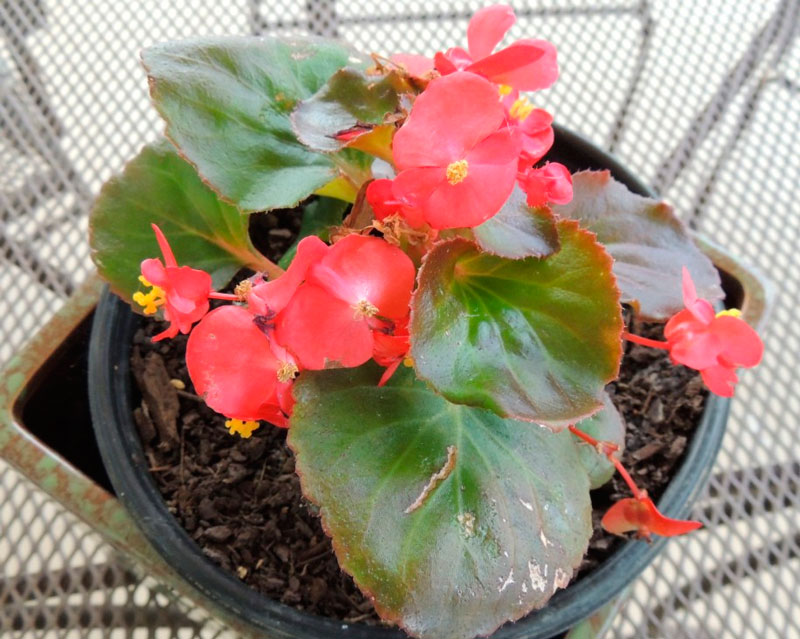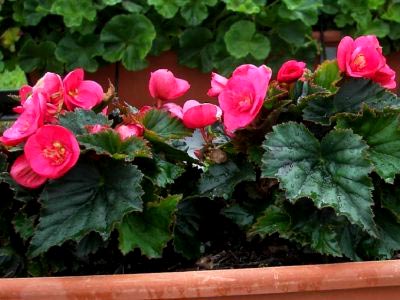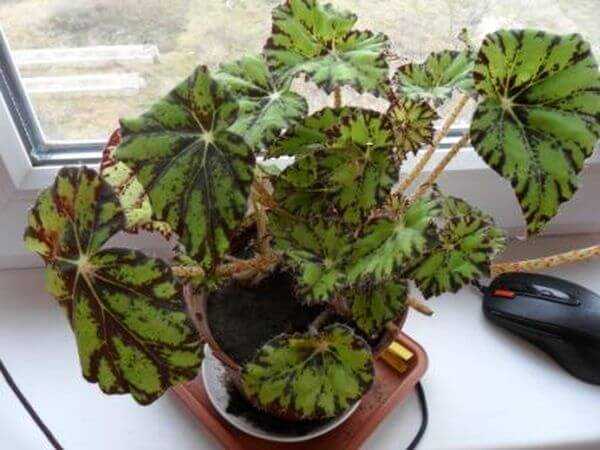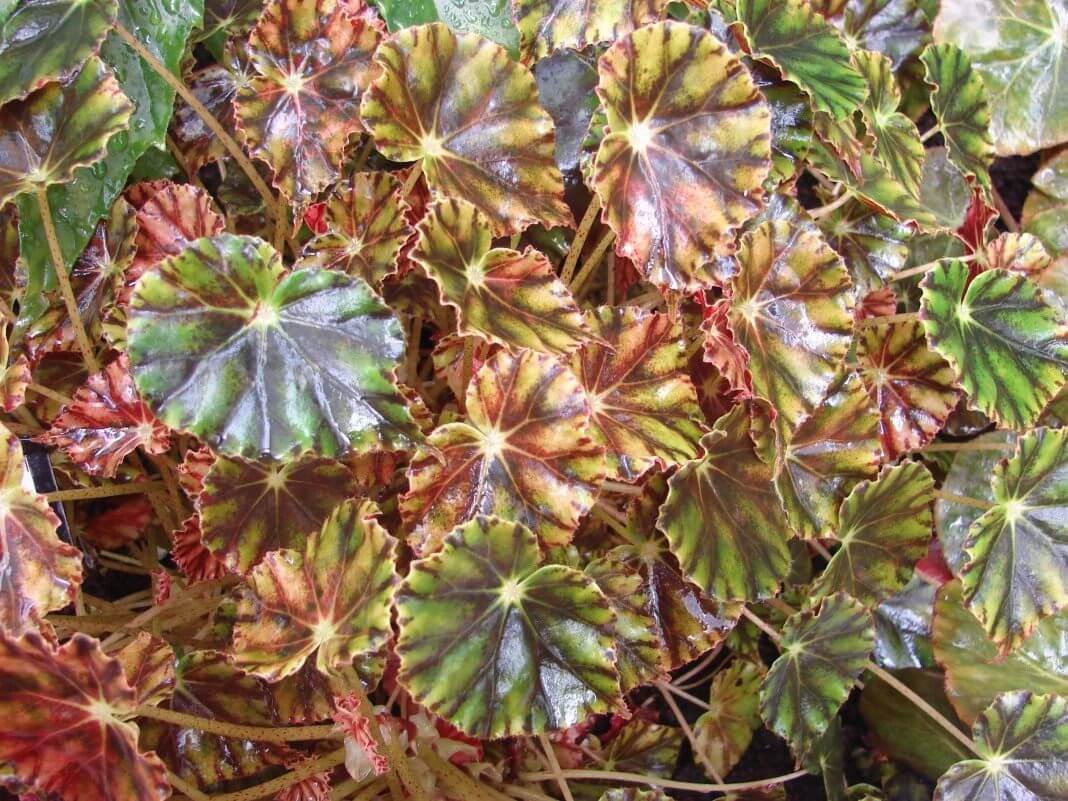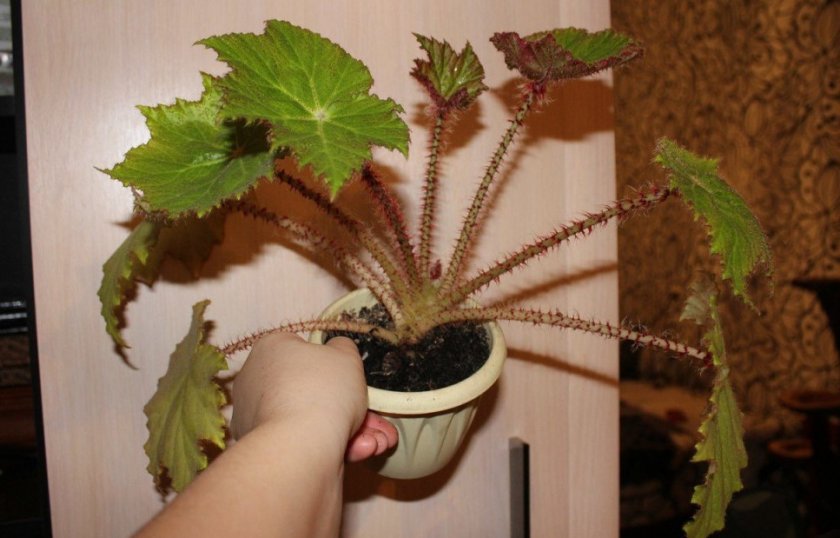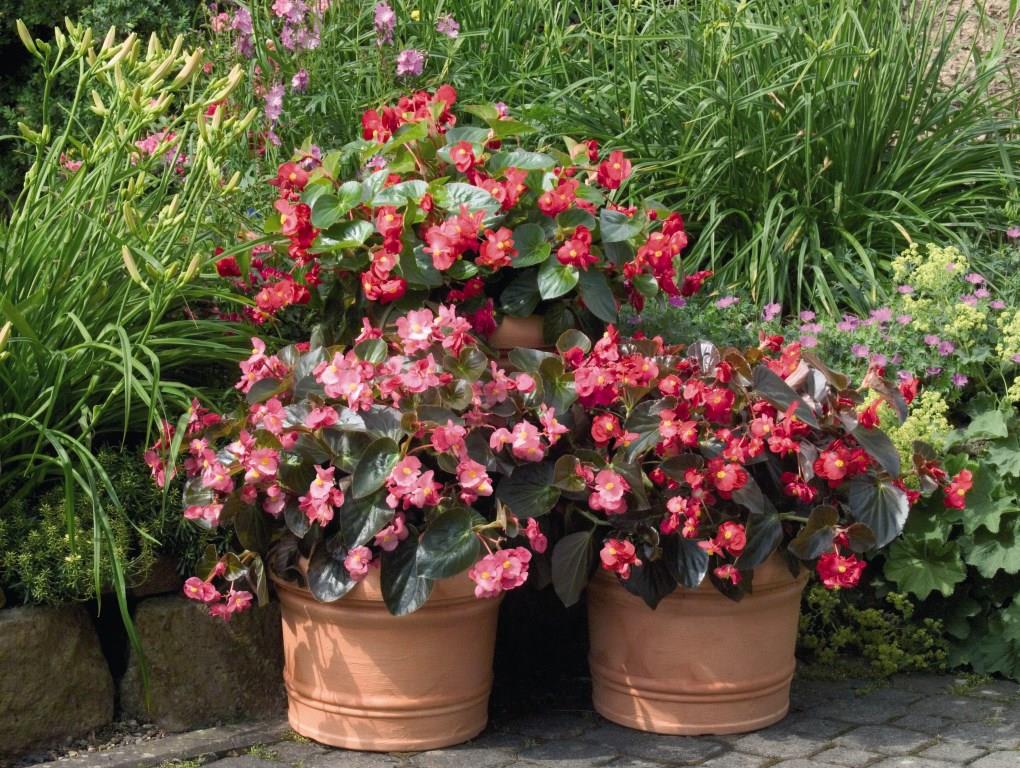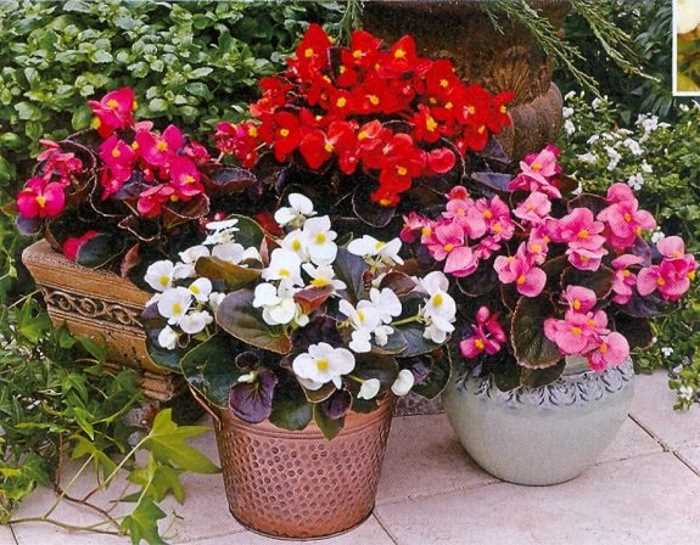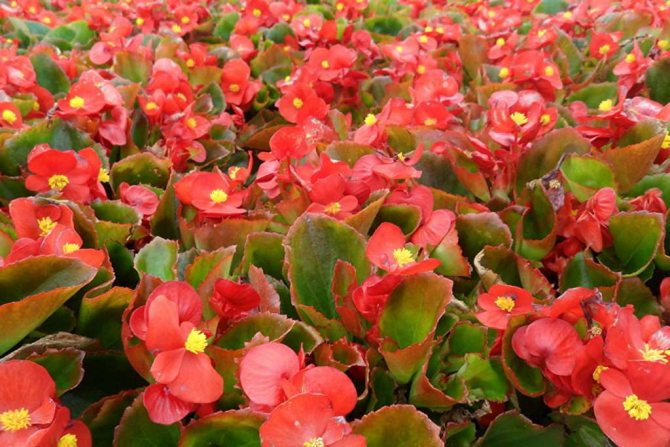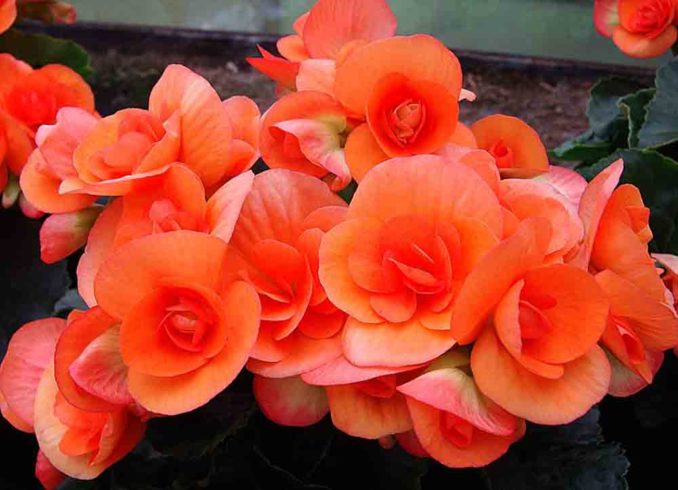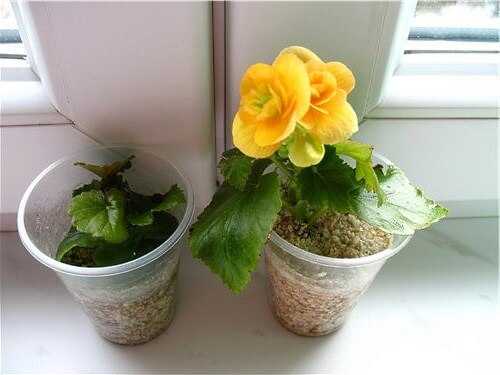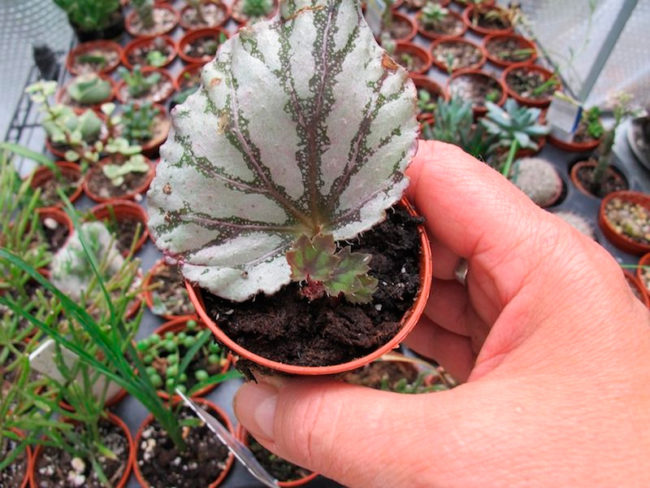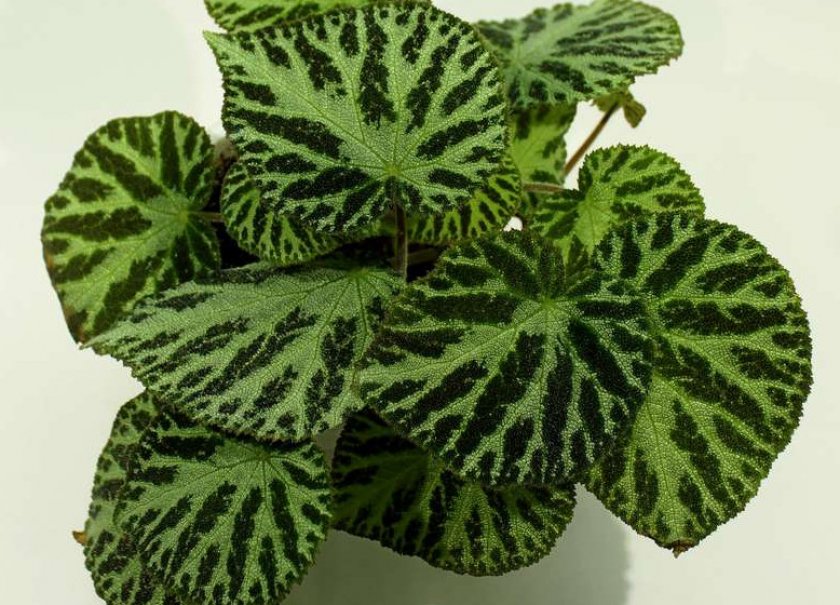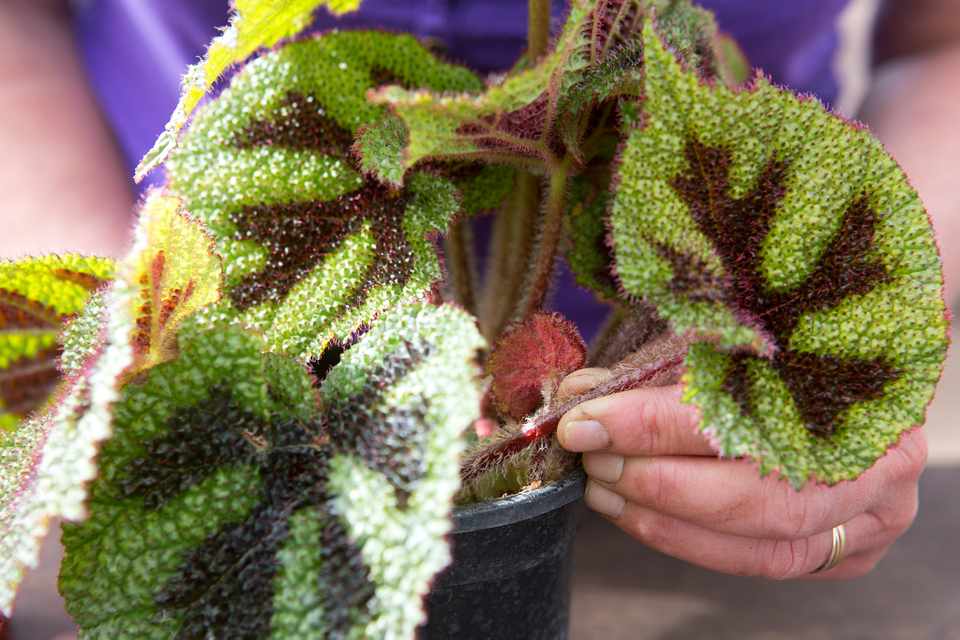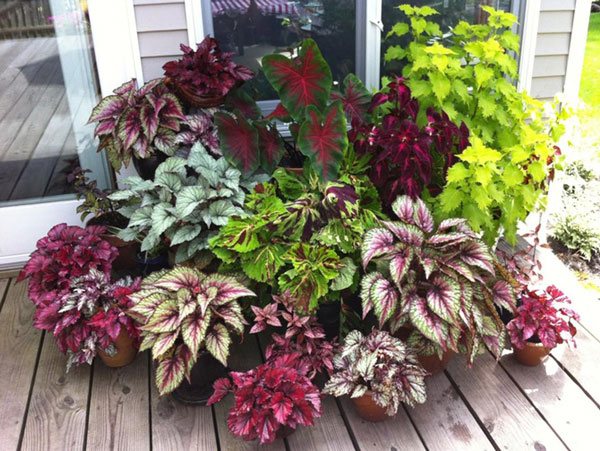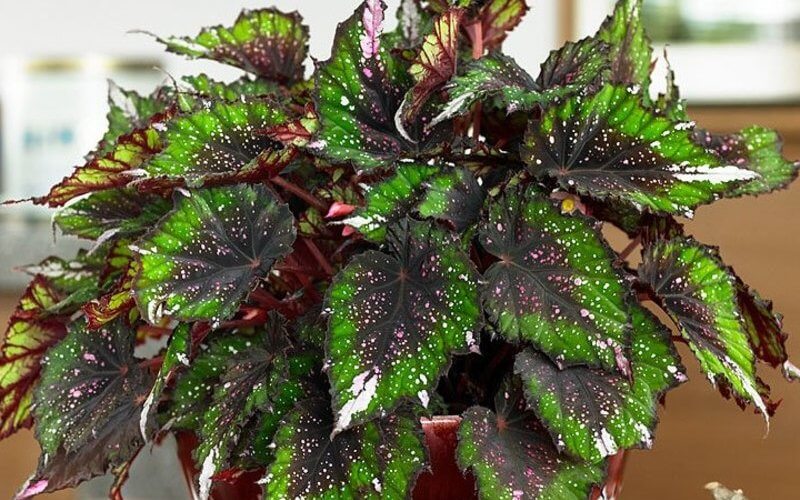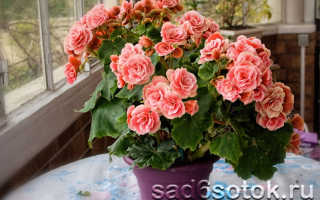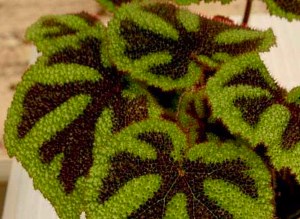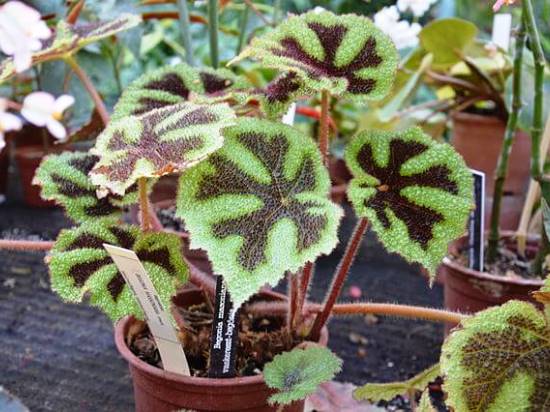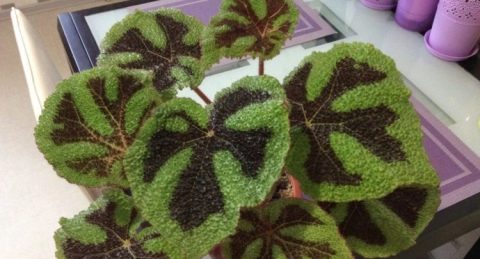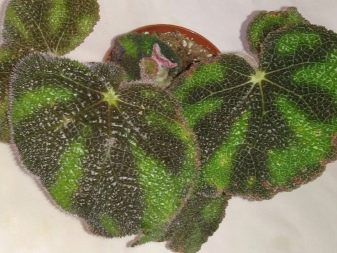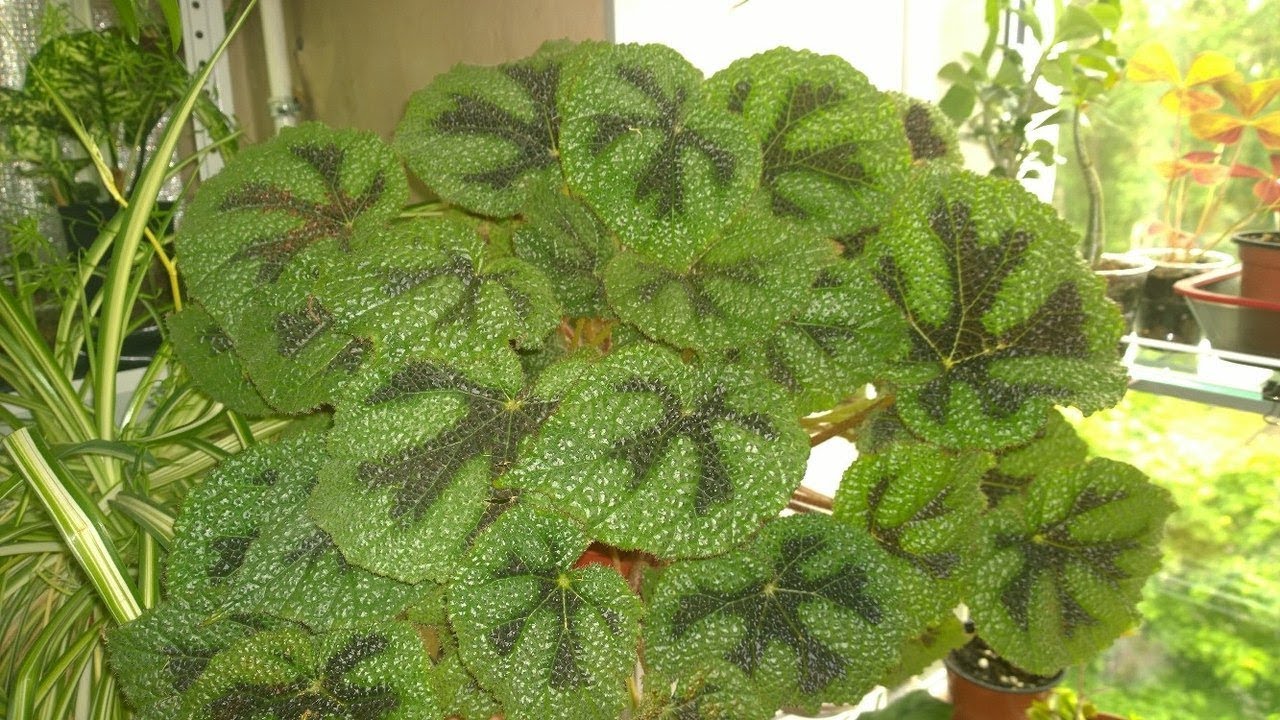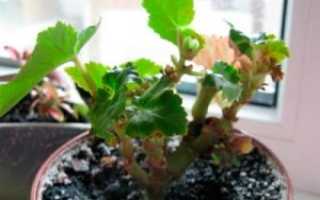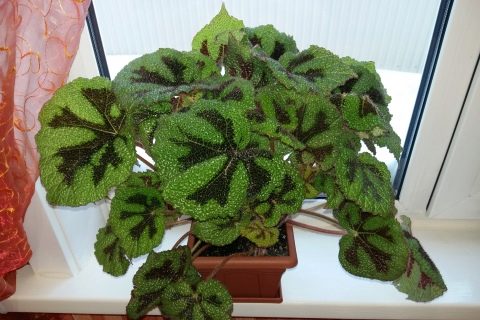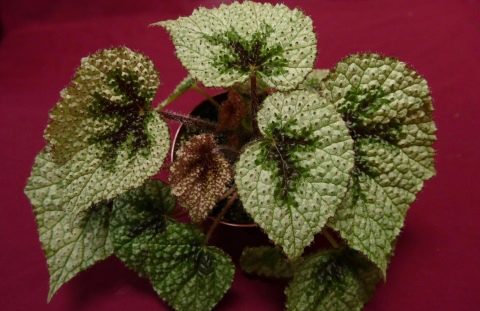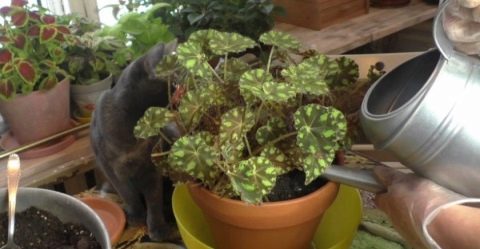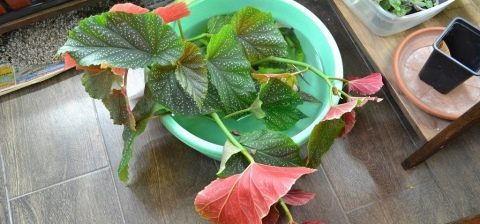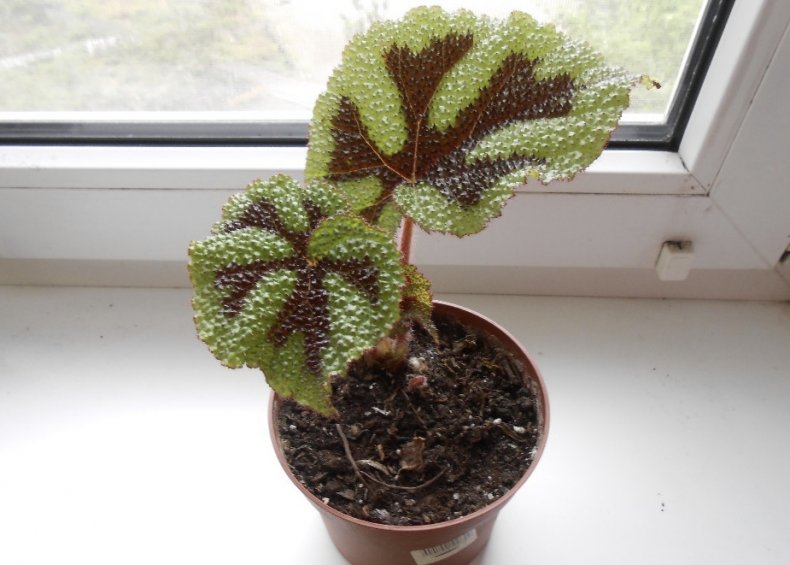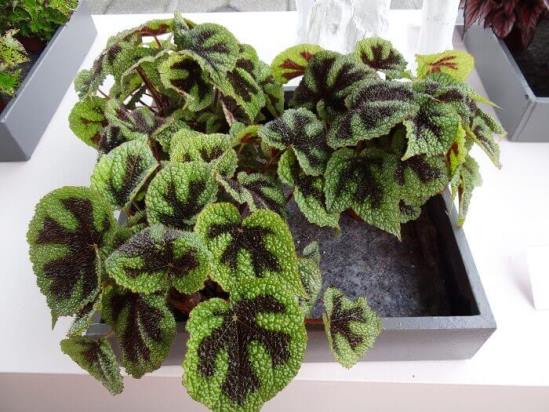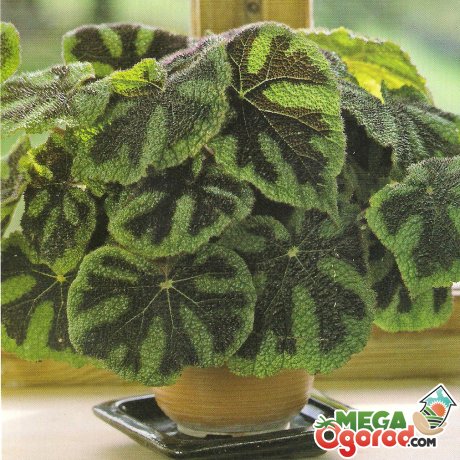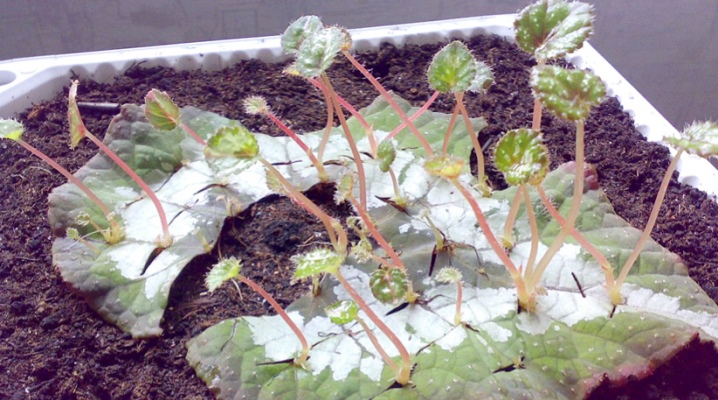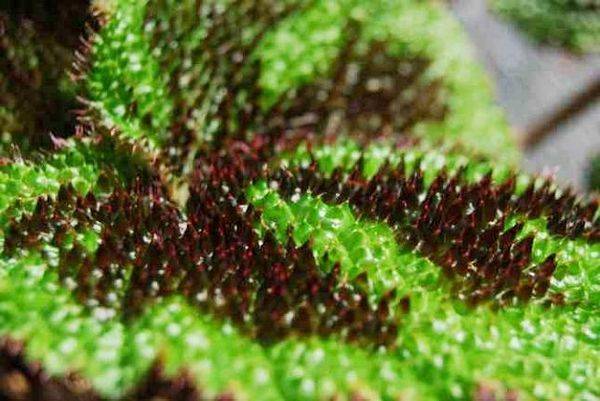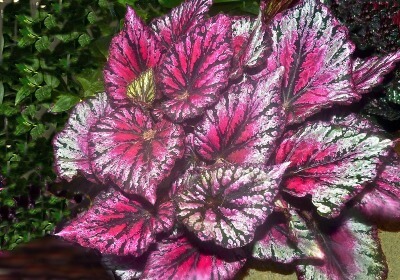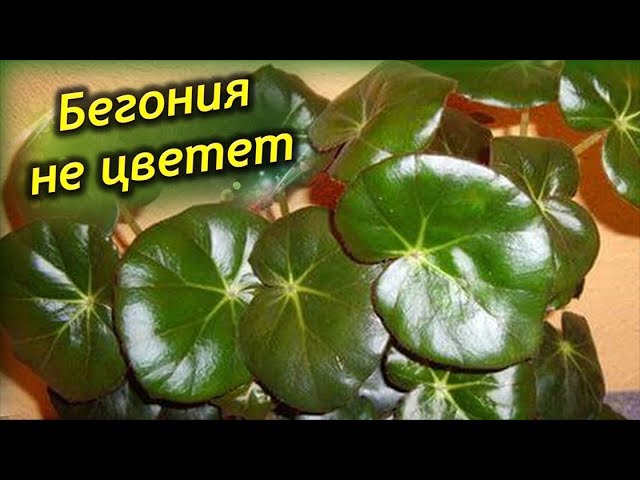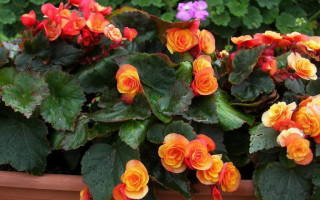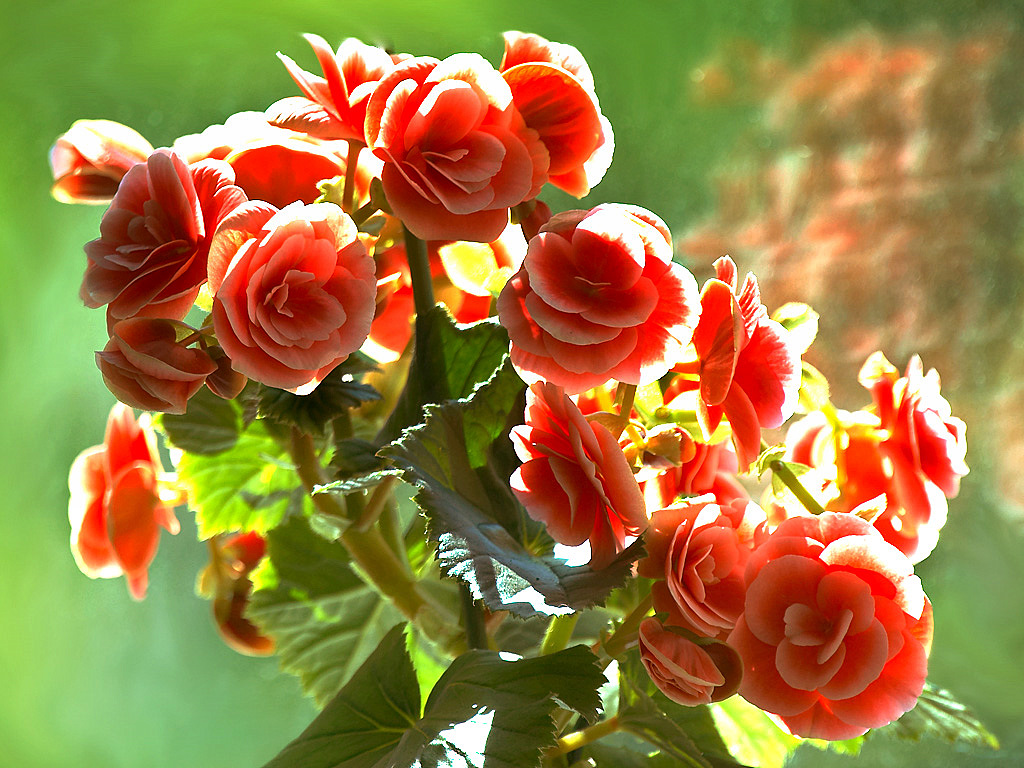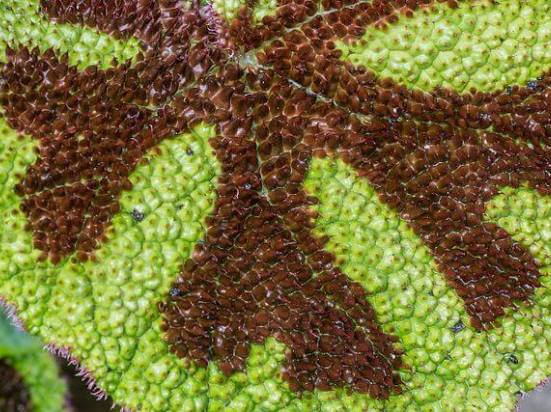Reproduction methods
The general rule: whichever method of reproduction you choose, in any case you need to work in a warm place. The room should be at almost greenhouse temperature. And no drafts!
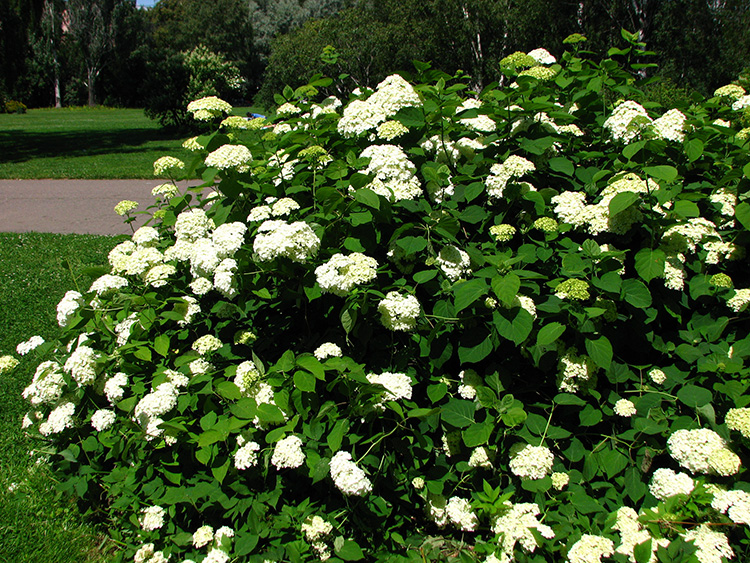
Dividing the bush (seating children)
After wintering, old tubers often release not one, but several shoots. Because of this, the bush becomes more and more magnificent.
When transplanting, simply separate the young "babies" from the mother bush. This is done with a sterile instrument. The babies take root in the water, and then they are planted in the ground.
In this video you will see all the work with a transplanted and shared bush + an experienced florist will share with you the experience:
Tuber (tuber division)
When transplanting, a large (from 7 cm in length) tuber with several buds is selected.
Plant the halves of the tuber in different small pots. For a start, you can even use a common pot (when the tubers grow leaves, plant them in separate "houses").
Cover the tubers with fresh soil, cover with a jar on top to create a greenhouse. Sprout the tubers in a warm, bright place. When the first leaves go, the greenhouse can be removed.
Leaf
The sheet is laid on top of a slightly moistened (preferably from a spray gun) soil. Cuts are made along the veins. Each part of the leaf should lie firmly on the soil, so the leaf can be lightly pressed with perlite. From above all this "structure" must be lightly sprinkled with earth.
The leaf is germinated in a lighted and warm place, under the jar.
When you see green shoots, you can dig up young plants and transplant them into separate pots.
You can see a good example of propagation of begonia leaf fragments (not Mason, but approximate in vegetative properties) here:
Shank
Cut off the leaf, healthy and strong, always with a petiole (small). It can be rooted in water or buried in the ground. When using water, purchased chemicals (such as "Kornevin") will help increase your chances of success.
A practical example of rooting a cutting of an ornamental leafy begonia is here:
Description
In the wild, it is found in the territories of southeast Asia from China to New Guinea. Height, depending on the amount of light, from 45 to 60 cm. Flowering period, blooms irregularly, can bloom at any time. Flower color, usually white with an admixture of greenery.
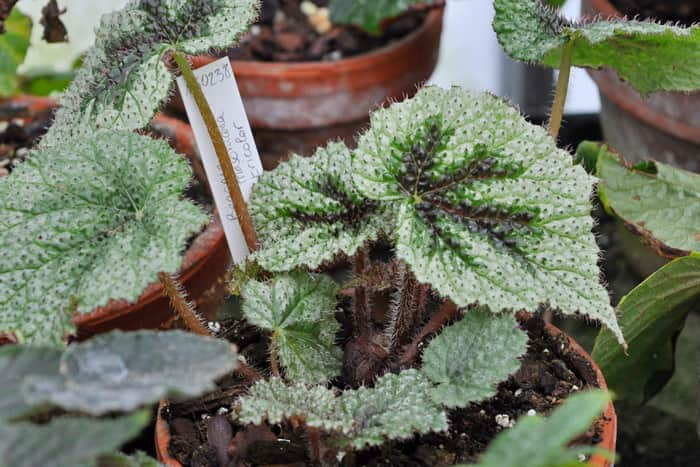
A place like a forest begonia will not tolerate a harsh sun. Rainforests are bright and have enough ambient light. For the summer period, the sill of the north, north-east or north-west window. Any other side is too sunny and the plant is set behind a curtain. You cannot put it far from the window, the flower will stretch out, it will lose the pattern on the leaves. For the winter period, the sill of the east, west window. South side behind a curtain. In bad winter weather, even the sill of the southern window is safe, but in the bright winter sun it is better to move it behind the curtain. Provide a place free from drafts and fumes from gas stoves. Temperature is also important. Begonia is thermophilic, in winter it is necessary to ensure a temperature of 18 ° C. A drop to just below 15 ° C can kill the plant.
In summer, it can be taken outside in a shady place in the garden, loves fresh air.
Begonia is a plant of forest soils, therefore, permeable and containing a large amount of organic matter (acidic soils). It is enough to buy a mixture for flowers. In order not to destroy begonia with high humidity (it touches the bottom of the coma), mix the soil with bark, fine gravel, vermiculite.Begonia is transplanted into a pot one size larger when the roots outgrow a clod of earth. After bringing the plant home, the condition of the roots is checked by removing it from the pot, the next check is in the spring. Watering is done when the top layer of the earth is dry. Boiled and warm water is used. Begonias, grown in shallow pots, tap water will quickly change the acidity of the soil. If begonia is not transplanted, feeding begins immediately. The plant does not like high concentrations of salts in the soil; it is worth fertilizing more often, with more limited doses. It is best to fertilize every week, no more than ¼ of the recommended dose. Maintaining high air humidity is a bigger problem. In rain forests, the moisture in the air is close to 100%. Thus, a pallet with constantly wet pebbles is the only solution. Begonia leaves should not be sprayed. The texture of the leaves causes water retention in the depressions, leading to the rapid appearance of powdery mildew.
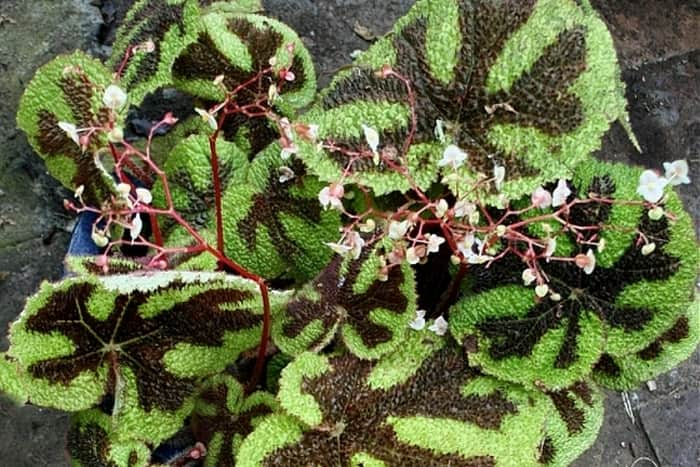
Begonia is not pruned, does not form aerial shoots, only leaves.
In winter, many are faced with massive wilting and death of leaves. If the rhizome is solid, it is a sign of the transition of begonia to a state of dormancy. Watering is limited, despite the temptation to water the wilting plant more. Watering is done so that the roots do not dry out. When there is more light, the pot, after a little watering, is placed under a hood while maintaining a normal temperature, after about 6-8 weeks, young healthy leaves will appear. At the end of the dormant period, large rhizomes can be divided into several parts, planted in small pots.
Home care
In addition to the generally accepted watering, fertilizing and pruning, the care of Mason's begonia also includes some actions associated with the winter period in the life of the plant. If its leaves begin to dry out in the fall, this means that it is preparing for the winter dormant period. On this signal, it is necessary to stop fertilizing with fertilizers, reduce the intensity of irrigation and increase the level of humidity. 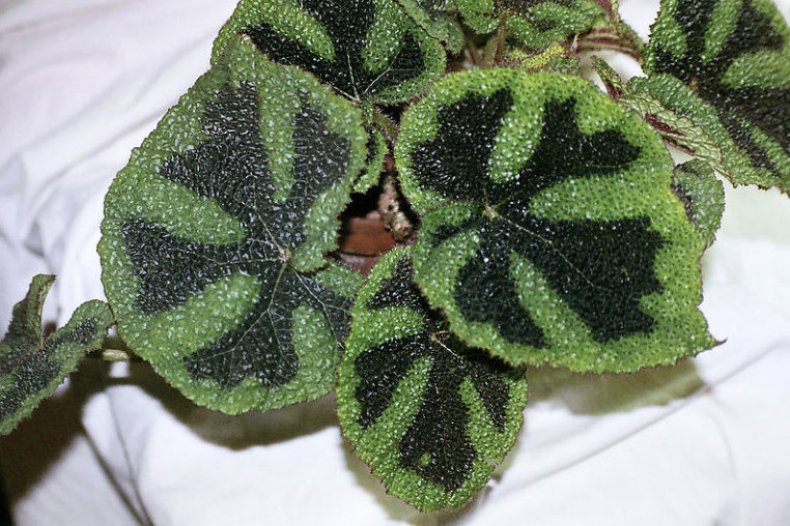 It is useful during this period to arrange greenhouse conditions for begonias by covering the plant with a transparent film. The dormant period can last only half a month, and it can take up to 2 months, after which the plant begins to wake up, releasing new shoots. After that, the cover must be removed.
It is useful during this period to arrange greenhouse conditions for begonias by covering the plant with a transparent film. The dormant period can last only half a month, and it can take up to 2 months, after which the plant begins to wake up, releasing new shoots. After that, the cover must be removed.
Top dressing
It is necessary to feed begonias monthly, with the exception of the dormant period, using fertilizers designed specifically for begonias. But it should be borne in mind that since the flowers on a given plant are of no value, and its original leaves play the main role in it, nitrogen should prevail in fertilizers, which stimulates the growth of the green mass. Top dressing must be combined with preliminary watering, so as not to burn the sensitive root system of the flower.
Watering features
During the growing season, the frequency of watering on average should be 2 times a week. Air humidity and room temperature can make their own adjustments to the intensity of irrigation, therefore, it is necessary to monitor the condition of the upper layer of the substrate, which must be slightly dried before watering. This is due to the fact that begonia, no less than drought, does not tolerate excess moisture in the soil.
Important! In no case should the water in the pan under the begonia pot accumulate and stagnate.
How to prune and replant correctly
Typically, begonia is pruned in October before it leaves during the dormant winter period, removing dried and damaged leaves. In addition, Mason's begonia often undergoes specific pruning of flowering shoots. Flowers, which are neither decorative nor practical, are an unnecessary burden on the plant and significantly accelerate its aging. Pruning is also done before replanting the bush in a new, more spacious pot.  This operation is carried out annually or once every 2 years in spring, in the period between winter dormancy and the beginning of active vegetation, and is accompanied by preliminary pruning of excess leaves. Then the earthen lump is removed from the pot, the soil is carefully removed from the root system, which is then placed in a new pot. Previously, a drainage layer of small pebbles, crushed brick or expanded clay is laid on the bottom of a new and simpler container. The roots of the transplanted begonia are covered with a substrate that is not compacted to provide better oxygen access to the roots. After that, the transplanted bush is watered, and excess water is immediately removed from the pan.
This operation is carried out annually or once every 2 years in spring, in the period between winter dormancy and the beginning of active vegetation, and is accompanied by preliminary pruning of excess leaves. Then the earthen lump is removed from the pot, the soil is carefully removed from the root system, which is then placed in a new pot. Previously, a drainage layer of small pebbles, crushed brick or expanded clay is laid on the bottom of a new and simpler container. The roots of the transplanted begonia are covered with a substrate that is not compacted to provide better oxygen access to the roots. After that, the transplanted bush is watered, and excess water is immediately removed from the pan.
Reproduction
Breeding begins in the spring. There are two ways:
- Tuber division.
- Leaves.
The division of the tuber is performed as follows:
- When transplanting, parts of tubers with buds are isolated. The possible number of new plants is equal to the number of buds.
- Delenki are cut off with a sharp instrument.
- Slices are sprinkled with crushed charcoal or slightly dried.
- The plots are planted in a moist substrate.
- Each plant is covered with a plastic bag and placed in a warm, well-lit place.
- It is enough to inspect the plants once a week, it is usually best not to disturb the planting.
- After a few days, the plants take root well, you can gradually accustom them to fresh air.
Leaf propagation:
- The sheet is cut off, and notches are made across the "veins" with a sharp instrument.
- Immediately lay the sheet on suitable soil (loose, water and breathable).
- Instead of soil, you can use any loose substrate: perlite, vermiculite, sand, good results are found in sawdust.
- It is not always easy to press the sheet to the ground, you can use a hairpin or even slightly dig the sheet into the ground.
- Cover with a bag, put in a bright place and do not disturb the plant. Occasionally you can inspect. After two weeks, roots and young shoots should appear at the incision sites.
Rotting cuttings is a common problem. Already on the second day, the cut leaves begin to become covered with spots, and as a result they rot, not having time to give young plants. There is a small nuance: for propagation by a leaf, you do not need to put too much soil in a bowl. Enough 1-2 cm of a suitable substrate, previously sterilized. The sheet should not be heavily added, it should only touch the ground - therefore sawdust is one of the most convenient ways - you can simply put a sheet plate on them. It is not necessary to leave a long petiole near the leaf, it will only interfere and contribute to damage to the planting material - it is cut close to the plate. If you are unsure, the cuttings can be inspected daily, giving fresh air access and immediately moistening the substrate with a spray bottle - but this is usually not necessary. There is no evidence that root and other stimulants promote root formation in Mason's begonia, but they can be used.
Features of begonia
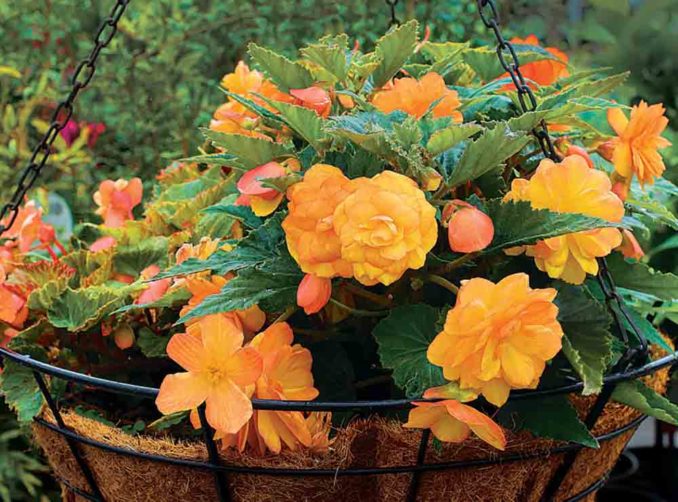
In addition to those existing in nature, there are approximately 1 thousand species, there are still about 2 thousand hybrids of this plant. In connection with this fact, an average description of this plant simply does not exist. Plus, such plants in various classifications are divided into decorative deciduous and decorative flowering, evergreen and deciduous, annuals and perennials, tall and creeping, tuberous and rhizomatous. Amateur flower growers grow at home a huge variety of types of begonias, and all of them need to be looked after when cultivated at home in about the same way.
Home care for Mason begonia
For normal growth and development, a flower from the tropics needs conditions that will meet its natural needs: humid air, warmth without sudden changes in temperature, a lot of light, protection from wind and drafts.At home, it is possible to provide suitable care with the appropriate knowledge and some experience.
Lighting
The choice of a place in the house to place this flower is an important factor in its successful growth and development. By the appearance of the leaves, one can understand that the plant does not have enough lighting or, on the contrary, it suffers from overheating in direct sunlight. If new leaves grow pale, and the color of the pattern on them fades, this is a sign of a lack of light.
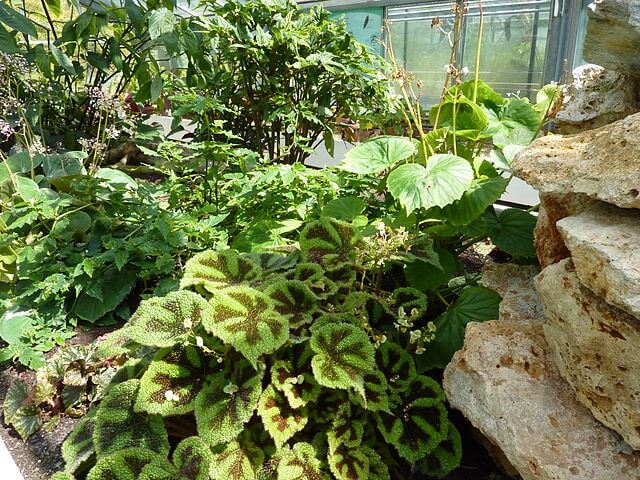
But if brown spots appeared on the leaf surface, then the flower received a sunburn, after which the leaf itself, and sometimes the entire plant, is severely dehydrated and may die.
Whenever possible, begonias are best placed on southwestern or southeastern windows. In the autumn-winter period of a short daylight hours, a tropical inhabitant necessarily needs additional illumination, fluorescent lamps have proven themselves well for this purpose. In the hot summer period, the plant must be protected from direct sunlight - install blinds on the windows, tighten the window with a translucent cloth, gauze, or periodically use light paper for shading.
Temperature and humidity
The natural habitat of this decorative leafy variety is characterized by constant temperature and high humidity. The optimum temperature for keeping a plant is 18-25 ° C, and lowering it below +16 ° C is already detrimental to the flower.
As a resident of tropical latitudes, this variety requires humid air. There are several ways to achieve the desired humidity at home without harming the plant:
- place a flower pot in a terrarium;
- install a humidifier nearby;
- in low vessels around the pot, place wet pebbles, expanded clay, sand, moss (in extreme cases, foam rubber moistened with water) and keep them constantly moist.
Watering and feeding
The Iron Cross is very moody about watering. For him, both drying out of the soil and its waterlogging are destructive. The flower prefers only slightly moist soil and does not tolerate stagnant water in the sump. Beautiful leaves suffer most from moisture; when water drops get on them, they begin to rot or get sick with powdery mildew.
Experts advise using feeding for begonia no more than once a month and only during the active period of the plant's life cycle - from March to October. Fertilizer solution for begonias should be used only after watering to avoid damage to the roots. In this case, you need to try to protect the leaves from falling drops of the mixture on their surface.

You can use special complex mineral fertilizers intended for decorative deciduous tropical indoor plants.
Preparing for winter
The dormant period for this variety begins with a decrease in daylight hours and lasts up to eight weeks. The flower stops growing, and the leaves may even begin to dry out. So that the plant does not dry out at all, it is necessary to increase the humidity of the air, and reduce watering. In this case, you can place a flower pot in a terrarium or greenhouse.
It will also be interesting: Coral begonia - caring for a houseplant at home?
Begonia Mason care
Temperature conditions. The optimum temperature for keeping is 18 - 24 ° C. Begonias do not tolerate frost, and at temperatures below 13 ° C they can get damaged.

Mason's begonia at home - lighting. Bright light shaded from direct sunlight, grows well when supplemented with fluorescent lamps.
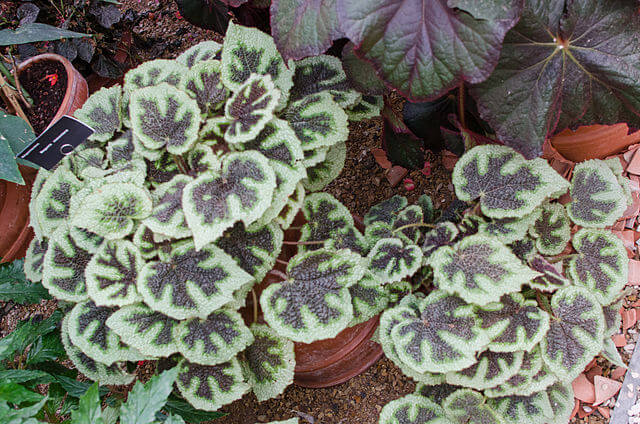
How to care for begonia. If your plant suddenly starts to dry out, don't throw it away. This type of begonias can go into hibernation during the winter period of time. At this time, reduce watering and keep the soil only slightly damp, preventing it from drying out completely.Cover the dormant plant with a plastic bag or plastic cap and keep it cool at about 16 ° C for 6 to 8 weeks. You will soon see new leaves appear. During the period of active growth, this beautiful begonia prefers high humidity.
Substrate. Peat-based, porous, slightly sour. Ready-made soil for Saintpaulias is perfect.
Top dressing. Fertilizers in half concentration every month all year round. Feed only when the soil is wet to avoid fertilizer burns. Do not dormant feed the plants.
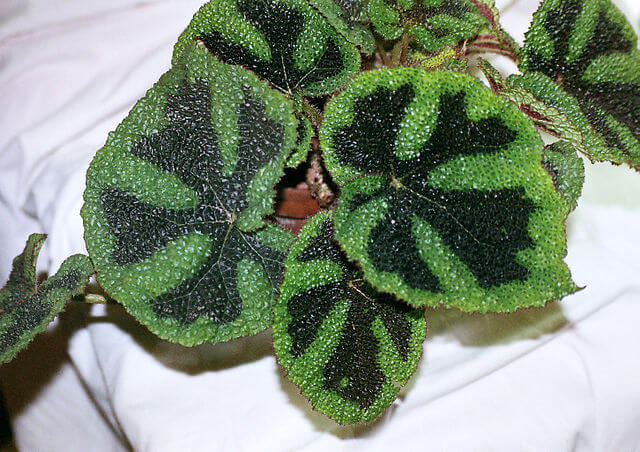
Appointment.
When Mason's begonia blooms. Spring Summer.
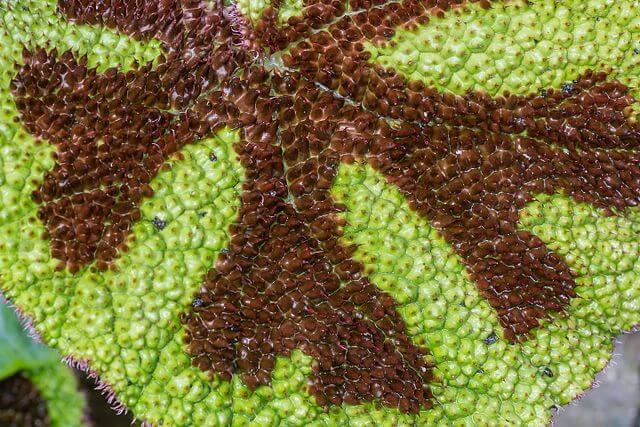
Air humidity. Moderate to high humidity. Use a humidifier or place the pot on a tray of wet pebbles to increase the humidity. Keep the plant out of drafts.

Watering Mason's begonias. Begonia masoniana is a rhizome begonia and its root system stores water, so let the soil dry out a little between waterings.
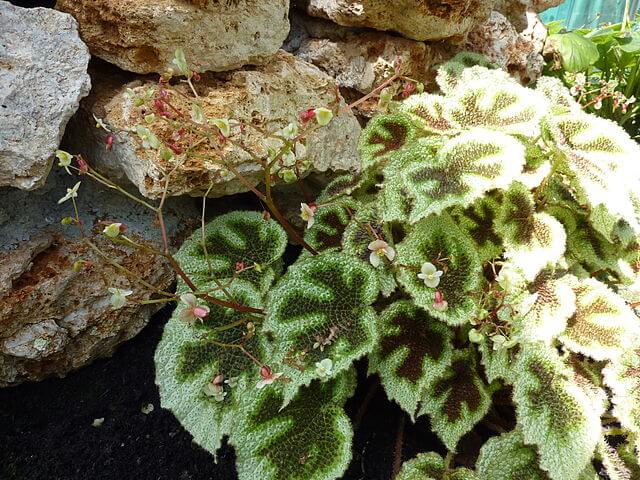
Transfer. In spring, a larger pot with large drainage holes. Use your fingers to compact the soil a little so that it doesn't stick too tightly to the roots.
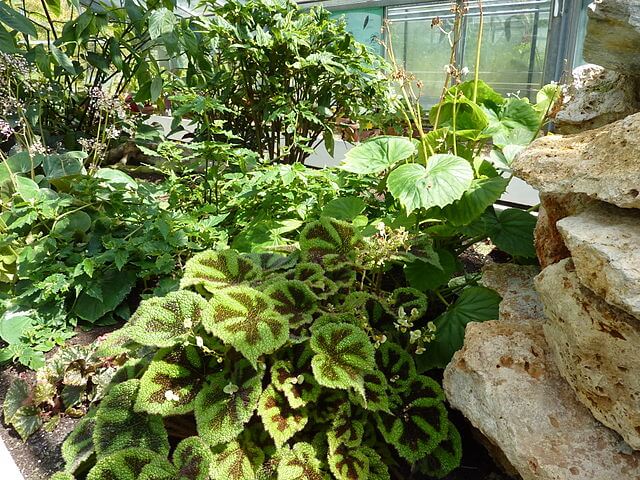
Mason's begonia reproduction. Stem cuttings that take root easily. Take cuttings 8 cm long in early summer. Cover the seedlings with plastic wrap or plastic wrap to maintain moisture. Leafy cuttings. Keep containers of cuttings warm and well-lit. Rooting will take place in about two weeks.
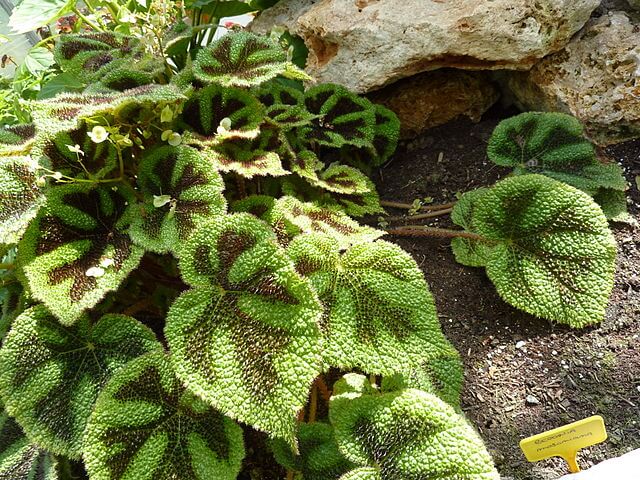
Pests and diseases. Powdery mildew may appear on leaves and stems. Poor air circulation and high air humidity create favorable conditions for fungal diseases. Also, this type of begonias is susceptible to bacterial leaf spots, rot. Pests include aphids, mealybugs and spider mites.
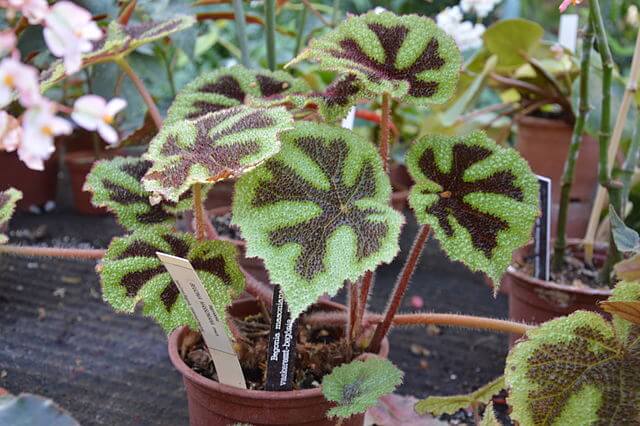
Note. Begonia is able to clean indoor air from harmful impurities.
Hydroponics.
This is interesting: Why begonia does not bloom at home - reasons
Optimal conditions for growing at home
This flower does not belong to the overly capricious types of houseplants, however, it requires some effort on the part of flower growers when growing it.
Location and lighting
Best of all, this begonia feels on windowsills facing the southwest or southeast, on which there is powerful but diffused lighting. This plant does not like exposure to direct sunlight. At the same time, it also does not tolerate low light, in which its leaves lose their brightness and expressiveness. With a lack of light, Mason's begonia responds well to artificial lighting. 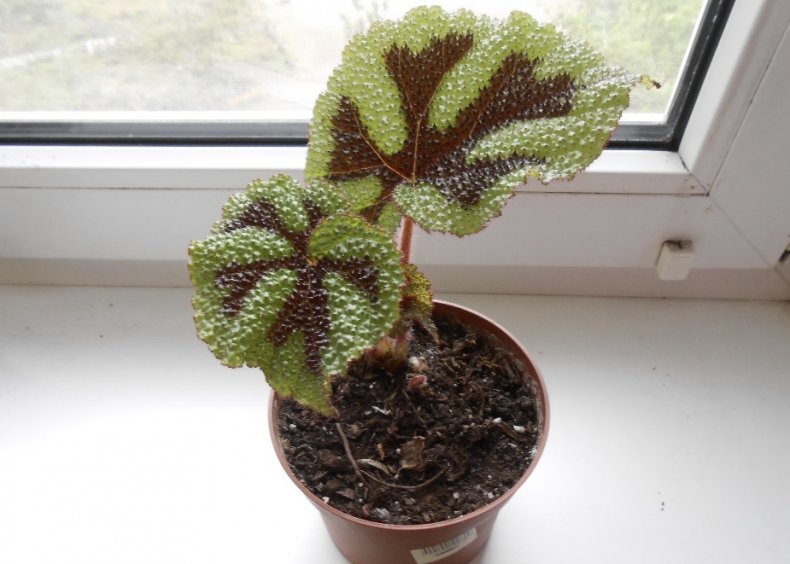
Temperature regime
The most favorable temperature for the comfortable existence of the described plant is in the range + 18 ... + 25 ° С. In winter, during the dormant period for a flower, the temperature may be slightly reduced, however, it should be remembered that it reacts extremely negatively to temperature changes, and a temperature below + 15 ° C can generally be destructive for it. Drafts are also contraindicated for Mason's begonias.
Air humidity
This plant is sensitive to ambient humidity, which should be at least 70%. To ensure a humid atmosphere in the room, it is recommended to use humidifiers, as well as to place the flower pot in wet pebbles or expanded clay.
Important! To improve the humidity regime, in no case should begonia leaves be sprayed with water, as this can cause putrefaction and powdery mildew disease.
Rules for maintaining humidity and air temperature
You should carefully consider the microclimate requirements for the maintenance of tropical plants, which are distinguished by high air humidity and compliance with the temperature regime.It is not allowed to moisten begonia by spraying, since unaesthetic spots form from drops of water falling on the surface of the leaf and the plant loses its decorative effect.
The best solution would be to plant begonias in a flower pot with high legs. The water in the pan, which does not reach the drain hole, will serve to humidify the air. Vessels with water, located in close proximity to begonia, perfectly increase humidity. The double pallet system is used when there is a lack of free space on the windowsill. The bottom pallet is filled with pebbles, on which the upper pallet with a pot is placed. The lower container is filled with water.
In terms of air temperature for begonias, the optimal range is + 20 + 24 ° C during active growth. In winter, the temperature in the room with the plant should not drop below + 15 ° C. Begonia can die completely in a cooler room. Air humidity requirements remain unchanged throughout the year.
Description of home begonia

The Antilles are considered the birthplace of begonias. The plant was discovered there back in 1687 by members of one of the scientific expeditions organized by Michel Begon. Subsequently, plants unknown at that time, found and described by the botanist from France Charles Plumier, who also participated in this trip, were named after him.
In horticulture, there are 125 species of this flower and a large number of hybrid forms, as breeders have done a tremendous and active work over the past decades. The total number of begonias is approaching a thousand. Among this large family, you can find decorative begonias, both flowering and deciduous. Tuberous large-flowering begonias obtained by hybridization are very popular.
In the second half of the nineteenth century, new types of begonias were found in different countries. For example, in India - royal begonia, in Peru - Veich begonia, in Bolivia - Pierce's begonia and Bolivian, in the highlands of South America - tuberous begonia. But florists and gardeners give the greatest preference to Belgian begonias.


